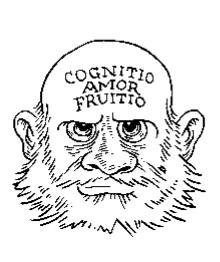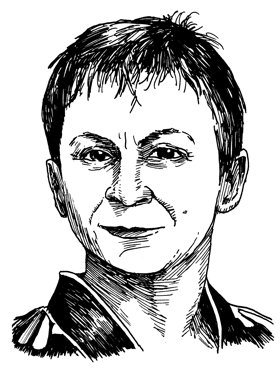In 1532 an Italian fellow named Viglius wrote to a friend about his upcoming trip to Venice, where he planned to see the new invention that was currently obsessing the medieval cognoscenti: the Theater of Memory. He wasn’t entirely sure what the Theater of Memory was but had heard that it was “a work of wonderful skill, into which whoever is admitted as spectator will be able to discourse on any subject no less fluently than Cicero.”
When he returned from Venice a few weeks later, Viglius wrote again to tell his friend what he had seen. “The work is of wood,” he wrote, “marked with many images, and full of little boxes.” The “theater” turned out to be a contraption the size of a small room, housing an apparatus with gears and a series of little wooden windows that opened and closed to reveal various words and images etched inside. By manipulating the windows, a visitor could retrieve nuggets of information on any number of topics: the seven virtues and vices, the teachings of Solomon, the orientation of celestial bodies, and all manner of other medieval factoids. The Theater’s inventor, a fellow named Giulio Camillo, “calls this theatre of his by many names,” wrote Viglius, “saying now that it is a built or constructed mind and soul, and now that it is a windowed one.”
Camillo had created a device that captivated the literate Venetian public, but the invention was not entirely his own. In truth, the Theater was a cheap factotum of an old monastic trick: the Art of Memory. In its original incarnation, the Art had required no physical equipment; it was strictly a mental regimen, involving an arduous training program that allowed cloistered monks (with no shortage of time on their hands) to pass their days memorizing the scriptures, religious commentaries, and assorted classical works. The technique worked something like this: A monk would apprentice himself to a master of the Art, who would teach him the technique of visualizing a great house or palace filled with a number of rooms. Each room contained a series of symbolic objects tied to a theme. For example, a room devoted to theology might play host to (surprise) a theologian, his head tattooed with the words cognitio, amor, fruitio, his limbs with the words essentia divina, actus, forma, relatio, articula, precepta, sacramenta, and so on. The trainee would learn to make a painstaking journey from room to room, visualizing each object, marking, learning, and inwardly digesting the metaphorical interior design.
It took dedicated monks years to master the Art, but those who did reported astonishing mnemonic feats. One fellow claimed to have memorized more than...
You have reached your article limit
Sign up for a digital subscription and continue reading all new issues, plus our entire archives, for just $1.50/month.
Already a subscriber? Sign in






